
Meo-Camuzet Wines
Domaine Meo-Camuzet is one of the most highly-respected estates in Burgundy, France. It counts among its holdings just over 6 acres of Grand Cru vineyards, including Richebourg, Clos de Vougeot,...Read More

In stock. Available for pick-up at store

In stock. Available for pick-up at store

In stock. Available for pick-up at store

In stock. Available for pick-up at store

In stock. Available for pick-up at store

In stock. Available for pick-up at store

In stock. Available for pick-up at store

In stock. Available for pick-up at store

In stock. Available for pick-up at store

In stock. Available for pick-up at store

In stock. Available for pick-up at store

In stock. Available for pick-up at store

In stock. Available for pick-up at store

In stock. Available for pick-up at store

In stock. Available for pick-up at store
Domaine Meo-Camuzet | Exquisite Plots in the Cote de Nuits
The exquisite cuvées of Domaine Meo-Camuzet are truly some of Burgundy’s best, having charmed their way onto the wine lists of some of the world’s best restaurants and into the collections of the most passionate wine lovers. The estate’s portfolio represents a dazzling collection of superstar plots in the Cote de Nuits, among them 6 of the greatest Grand Cru plots and 10 Premiers Crus in Nuits Saint Georges and Vosne-Romanee.
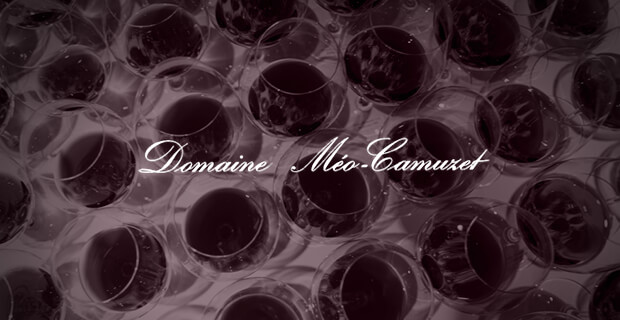
Each terroir or “climat” is allowed to express itself to the fullest, through a very precise work out in the vineyards, combined with a minimalist approach at the winery. The wines of Meo-Camuzet are full-bodied and concentrated yet very fine Pinot Noirs, with firm tannins that grip the tongue gently and leave it silky smooth. Discover these beautiful Burgundy reds, along with some juicy and mineral white wines made with Chardonnay.
The History of Domaine Meo-Camuzet
Domaine Meo-Camuzet was founded by Etienne Camuzet, a dedicated winegrower and mayor of the village of Vosne-Romanée in Burgundy, who spent most of his time in Paris as a political figure representing the Cote d’Or. In 1920, he purchased the Chateau du Clos de Vougeot and its vineyards, and to keep his lands productive while he was away on political business, he decided to offer them to capable sharecroppers (métayeurs) to farm. Eventually, he gave the chateau to the Confrerie des Chevaliers du Tastevin. After the death of Etienne Camuzet in 1946, his daughter Maria Noirot inherited the estate, retaining the tenant farmers. And when she passed away in 1959, the estate was left to her closest relative - her nephew Jean Meo, a member of Charles de Gaulle’s cabinet.
Jean Meo would manage the estate from afar between 1959 to 1984, changing its name from Camuzet to Meo-Camuzet in 1981. During this time, Jean Meo relied heavily on the four tenant farmers of the estate. One of these, Henri Jayer was a visionary of the time, with a particularly acute knowledge of the region’s terroirs. Ahead of his time, Henri Jayer was one of the first to stress the importance of temperature control during fermentation as a way to maintain the freshness of the fruit in the wines. He was also famous for having discovered some of the most beautiful sites of the area, including the legendary Vosne-Romanee Cros Parantoux. His legacy would include 40 years spent farming these lands and selling his wines under his own very popular label. By the mid-1980’s, Jean Meo realized he would need the help of the new generation to run the estate. He proposed to his son, Jean-Nicolas Meo, to take over Domaine Meo-Camuzet.
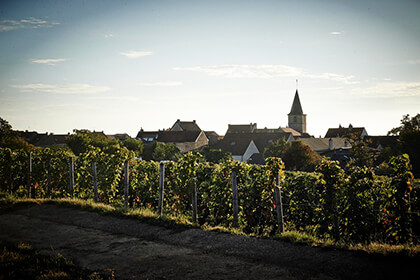
Having finished his studies at ESCP business school in Paris and at the University of Pennsylvania, Jean-Nicolas Meo returned to Vosne-Romanee in 1989 and immersed himself fully into the family property and its operations. He learned everything he could about viticulture and winemaking from his father, Henri Jayer and tenant farmer Christian Faurois as mentors during this transition.
By this time, Meo-Camuzet had already transitioned from selling their wines as bulk to local to bottling wines with the estate label, starting with the 1983 vintage. Jean-Nicolas applied his business knowledge to create an international distribution network for these wines, which soon gained the favor of some of the world’s most famous sommeliers.
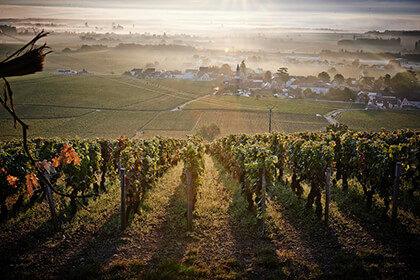
Jean-Nicolas also reclaimed the family vineyards from the tenant farmers, who had by 2008 all gone into retirement. In order to meet the increasing demand for Burgundy wines, Jean-Nicolas decided to collaborate with his sisters Isabelle and Angeline Meo in establishing a négociant company by the name of Meo-Camuzet Frere & Soeurs, with its own unique label and a portfolio that includes more affordable wines.
Today, Jean-Nicolas remains at the helm of the estate, directing the cellar operations and sales. Out in the vineyards, Christian Faurois serves as his right hand man, having dedicated himself fully to the vines of this property since 1973.
Meo-Camuzet: A Collection of Burgundy’s Finest Terroirs
Domaine Méo-Camuzet is situated in Vosne-Romanee in the Cote de Nuits area of the Cote d’Or. The estate today boasts 14 hectares of vines in some of the most exquisite appellations and crus of Burgundy. These include 2.5 hectares total of 6 Grand Cru plots (Richebourg, the Clos de Vougeot Grand Cru, Corton Clos Rognet, Corton Les Perrieres, Corton La Vigne au Saint and Echezeaux) and 8 hectares in 10 Premiers Crus in Nuits St. Georges and Vosne-Romanee. The estate produces mostly red wines from Pinot Noir, which have become staples on restaurant wine lists around the world for their beautiful structure, finesse, concentration and charm.
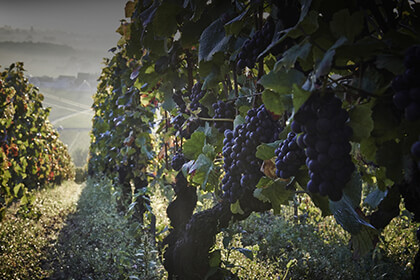
Out in the vineyards, all work is conducted strictly by hand, and each vine is tended to with great personalized care. The vines are pruned very precisely, de-budded in May as necessary to limit yield, de-leafed further in the season to allow the sun to shine through, and green-harvested to allow only the most successful grapes to survive. The soil is ploughed by horse five times per year and treated with organic fertilizers. In fact, most of the vineyards of Meo-Camuzet are farmed organically, though the estate has chosen not to become certified, in order to keep the option to treat the vines in vintages where this is necessary.
Great care goes into determining the date of the harvests at Meo-Camuzet in order to ensure fruit at the optimal stage of phenolic ripeness, the ideal alcohol content of 13% ABV, and a good concentration of flavors. The key is to remain flexible and adapt to unpredictable changes in weather, finding the fine line between ripeness and rot.
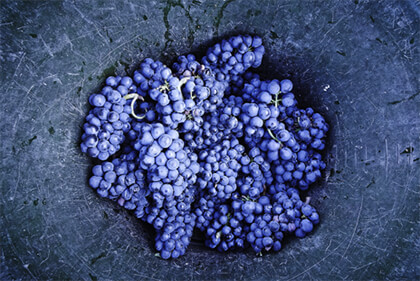
Harvest is always strictly manual, to allow for a more thorough sorting of the grapes. The fruit is brought to the winery in crates of 15 to 20 kg, which minimize the pressure on the grapes and leave them as intact as possible. The grapes are then sorted on a sorting table at the winery by a team of 6 to 12 people under the supervision of Jean-Nicolas Meo. Roughly 5-20% of the fruit is eliminated, depending on the vintage and appellation.
A Minimal Intervention Winemaking at Meo-Camuzet
After de-stemming, the fruit is left to macerate at a cool temperature of 15°C (or 60°F) for 3 and 5 days, after which fermentation kicks off spontaneously in concrete vats. During alcoholic fermentation, which typically lasts two to three weeks, the winery team controls the temperature, keeping it below 34-35°C (around 95°F). In the first few days, pump-overs are carried out, followed by punch-downs toward the end of the fermentation process. Extraction is kept very light and gentle, in order to allow each wine to fully express itself and its terroir of origin.
The next step is the maturation of the wines, which is done in close regard to the characteristics of the vintage and terroir of origin. Typically, the Village wines (like their Chambolle-Musigny cuvée) are matured in barrels of which 50% is new oak, the Premier Cru wines matured in 60-70% new oak and the Grand Crus in 100% new oak. Oak barrels are carefully chosen, the toasting and type of oak adapted to each appellation. The wines are racked during the maturation process and the various casks from the same appellation combined in tanks for 3 to 4 weeks before bottling, which takes place after a total maturation period of roughly 17 months.
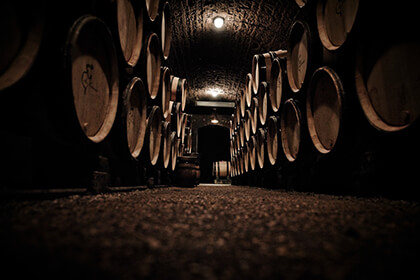
The wines are bottled through a gravity-led system with a natural clarification process replacing filtration. With some exceptions, there is also no fining involved.
The Elegant, Fragrant Burgundy Wines of Meo-Camuzet
The wines of Meo-Camuzet are sought-after by Burgundy lovers around the world. Their Pinot Noir reds are full-bodied, rich, concentrated and firm with expertly integrated oak that still allows varietal, terroir and vintage to shine brilliantly through. The specific style of each Meo-Camuzet cuvée depends largely on its appellation and vintage.
The Meo-Camuzet Grand Cru Echezeaux 2013, for example, displays a very deep and intense color in the glass, revealing powerful red and black fruit aromas, as well as some smoky and vegetal nuances. Quite full-bodied on the palate, this is a silky, smooth and charming wine, ready to open in 2021-2022.
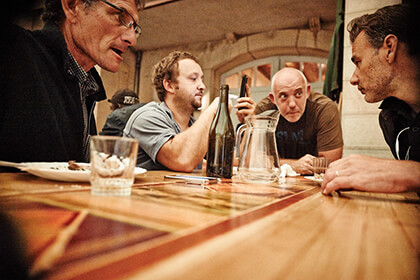
Meanwhile, the Meo Camuzet Corton Grand Cru La Vigne au Saint 2014 reveals redcurrants and red cherries on the nose, with the pure elegance of a Vosne. On the palate, this wine shows a medium body with grippy and structured tannins. This wine should be ready to drink around 2020.
The estate also produces a few delectable white wines from 100% Chardonnay, like the Meo-Camuzet Bourgogne Hautes-Cotes de Nuits "Clos Saint-Philibert" Domaine Monopole 2016. Planted to Chardonnay in the early 1990s, the Clos Saint-Philibert is a gem of a monopole vineyard, with a cool and rocky terroir that delivers great freshness and minerality in the wines, and limestone soils which allow for a fantastic ripeness and fleshy fruit. The 2016 vintage offers pristine in balance and undeniable pedigree.